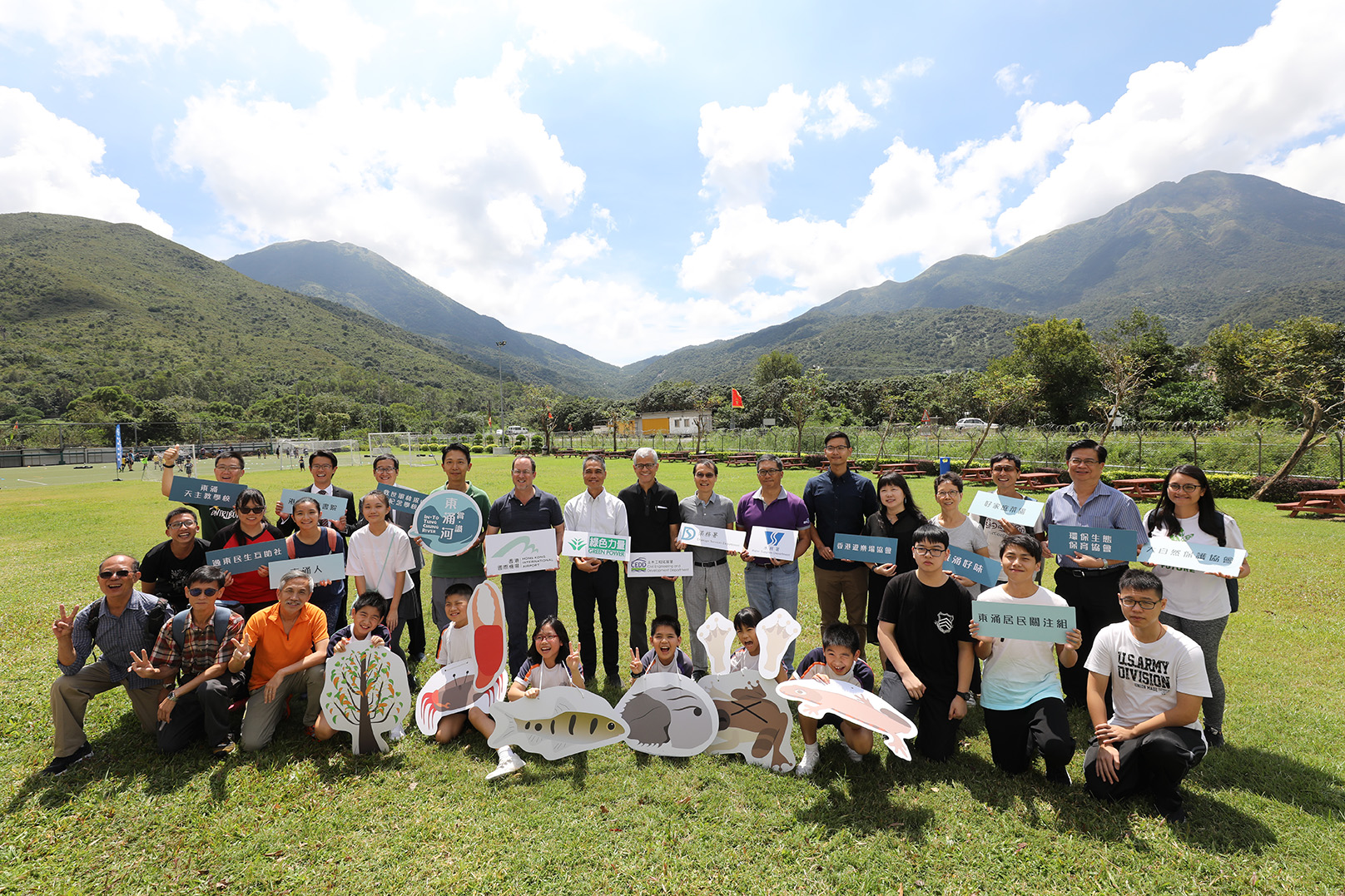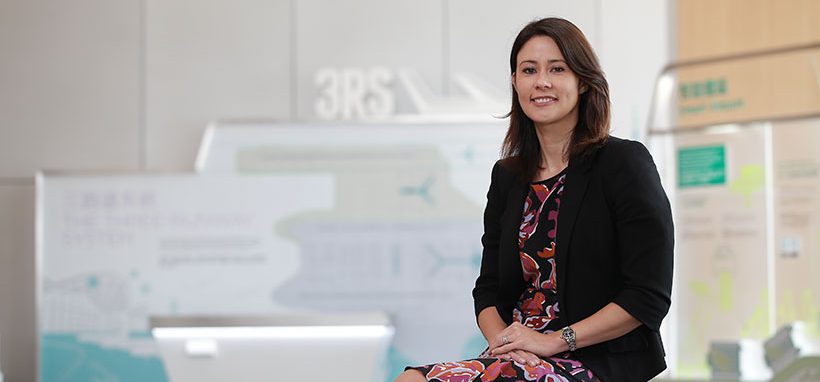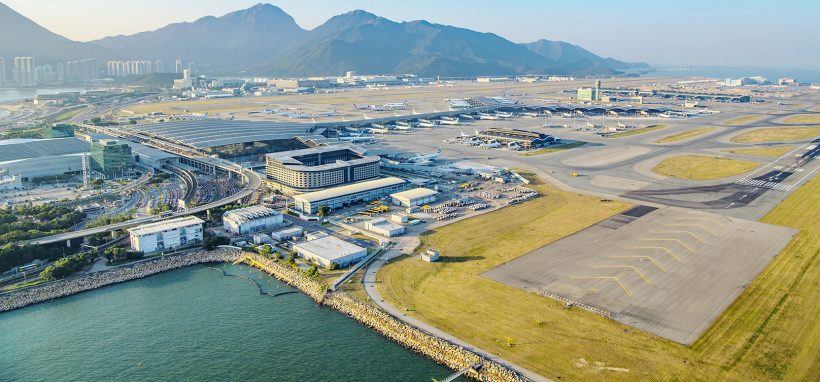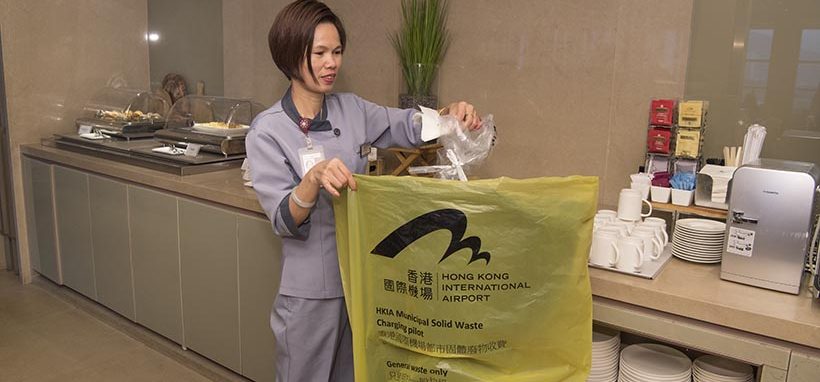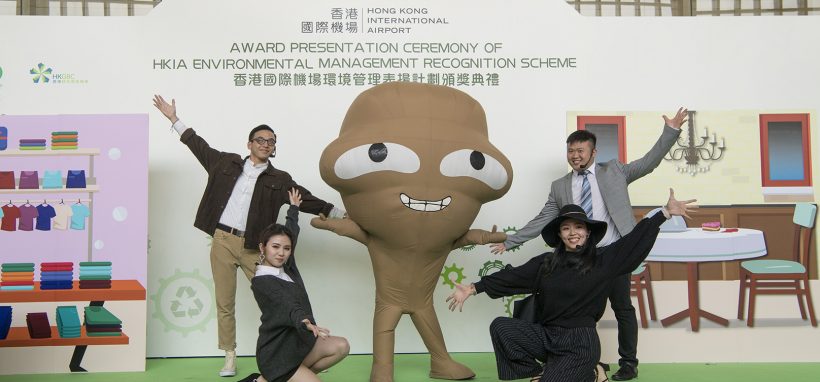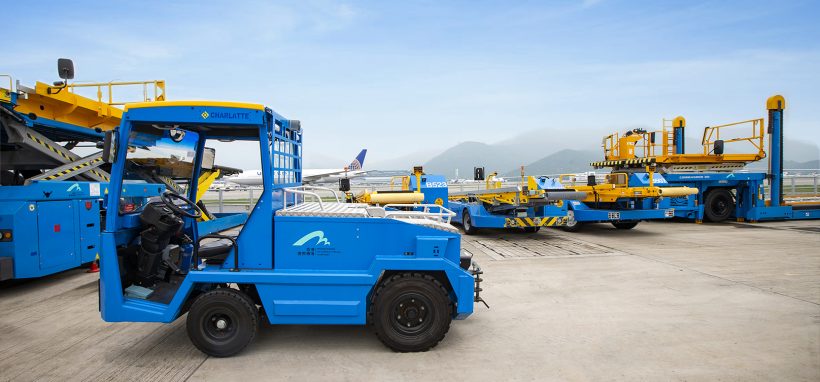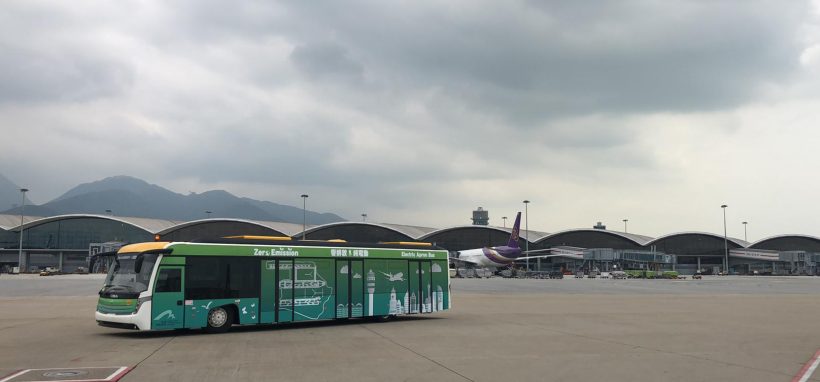Greenest Airport
The operation and development of HKIA gives rise to a range of environmental impacts. Many of these are directly measurable and, taken together, represent the ‘environmental footprint’ of HKIA. Recognising that a significant proportion of HKIA’s footprint is derived from our airport business partners, we collaborate with them and the wider aviation industry, and adopt a systematic ‘airport-wide’ approach to manage, reduce and mitigate the airport’s environmental footprint, with particular focus on the management of solid waste, carbon and energy, and biodiversity.
AAHK administers a range of programmes to reduce HKIA’s environmental footprint. We encourage our business partners to participate by demonstrating the footprint reduction benefits that could be accomplished through collaboration and try to frame these programmes to be easy, useful, and, wherever possible, free to our business partners.
Pledged to make HKIA the world’s greenest airport in 2012. This serves as a goal and a driver to continuously improve HKIA’s environmental performance.
Demonstrates AAHK’s commitment to environmental management and defines the key focus areas.
ISO 14001 Environmental Management System
A certified environmental management system to manage, measure and continuously improve our performance.
The Five-Year Environmental Plan sets out the actions and timeline in pursuit of the greenest airport pledge.
Q&A with Kristy Tan, Manager, Environment
What is the significance of achieving ISO 14001 environmental management system (EMS) certification to drive continuous environmental improvement?
“ISO 14001 is an internationally recognised voluntary standard that outlines the requirements for establishing an effective EMS. The international framework brings together standardised documentation and processes for monitoring legal compliance, managing AAHK’s significant environmental aspects, checking performance and reporting issues. Regular reviews, training and continuous improvement on environmental performance are fundamental elements of the EMS. To meet ISO 14001 standards, our EMS is audited annually by an independent certifying body.
In March 2018, we reached a significant milestone by certifying our EMS against the ISO 14001 standard, thereby putting us one step closer to meeting our ‘greenest airport’ pledge.
What were the major challenges encountered?
“Our EMS covers all areas at HKIA which are under our direct control. It involves all departments and staff members, and includes many complex airport operations and development projects.
Our initial challenge was ensuring our colleagues, most of whom have a non-environmental background, understand the purpose of the EMS, and their roles and responsibilities in supporting it. Through online training, departmental briefings, workshops and site walks, the percentage of staff who completed the online EMS awareness training reached 95% at the end of 2017.
As our EMS was being implemented, another challenge was encouraging staff to freely report on incidents for the benefit of continuous learning and improving of our environmental performance. Through the provision of reporting tools, we have gathered greater insights on the implementation of our EMS and identified areas where we could do better. This has become a key driver in our performance and led to improvements such as a 40% increase in the quantity of food waste collected by our contractor.”
How did you collaborate across departments to achieve certification covering areas under AAHK’s direct control at HKIA?
“Achieving ISO 14001 EMS certification is a result of the collective effort of everyone at AAHK. A good example of cross-departmental collaboration is the internal compliance check process. Formulated to ensure all departments conform to the requirements of the EMS, teams of trained internal compliance checkers are tasked with examining the implementation and maintenance of the EMS at a departmental level across the organisation. Feedback from internal compliance checkers has been positive with improved relationships with other departments and a greater level understanding of their colleagues’ tasks being the principal benefits.”
What are your priorities and targets for 2018/19 and beyond?
“As we outsource many of our operational functions to our business partners, we recognise the need to have greater oversight of their environmental performance when operating at areas under our direct control. We have embedded our corporate environmental commitments in our procurement platform to send a clear message to our supply chain of our expectations. Going forward, we aim to launch a comprehensive monitoring programme to give us better visibility of how our business partners comply with our environmental requirements in contracts and other agreements, and drive additional improvements.”
What were you most proud of for completing this project?
“Achieving ISO 14001 certification has been such a great achievement, considering the complexity of our operations and the area under our direct control. I am proud that we have this system in place and that it has yielded many benefits, such as increased leadership involvement, standardised documentation and processes, and regular compliance checks.”
Waste is one of Hong Kong’s most pressing environmental issues. With landfill sites becoming full and the forthcoming introduction of the municipal solid waste (MSW) charging scheme, we continue to look for innovative ways to accelerate the reduction of waste at HKIA. Our approach to waste management is to reduce the absolute amount of waste generated, facilitate waste separation at source to promote recycling and explore other disposal options. We have set a target of reducing/recycling/recovering 50% of waste generated at HKIA by 2021. Our overall recycling rate in 2017/18 was 8.7%.
Recycling performance
Our three-pronged strategy to waste management
Key initiatives
Waste reduction at source
- Paper towels in washrooms – A pilot programme was conducted in HKIA Tower from Q3 to Q4 2017/18. The trial will lead to a wider rollout of hand dryers in HKIA Tower and Airport World Trade Centre. New hand dryers are also being trialled in the two mock-up washrooms in Terminal 1.
- Reusable dining ware – To reduce single-use disposable dining ware, a requirement has been added to the license agreement for tenants of food and beverage outlets and food courts to offer reusable dining ware to dine-in customers from Q4 2017/18.
Facilitation of recycling
- Aircraft cabin waste – Inflight waste separation trials were conducted with home-based carriers from Q2 to Q4 2017/18 to identify opportunities for improvement and prepare them for the upcoming MSW charging scheme.
- Performance-based contract – A performance-based contract for waste management was established to enhance recyclables collection and sorting. A progressively rising minimum recycling target has been set for each successive year, which is reinforced with incentive payments. The contract was awarded in Q4 2017/18 and became effective in Q1 2018/19.
- Waste charging – To help the airport community prepare for mandatory MSW charging, AAHK commenced a 20-month MSW charging pilot scheme with tenants and airlines to determine a charging mechanism that would be the most practical and cost-effective approach. Participation is made easy through the provision of bags and bins to separate waste. The scheme is useful in providing business partners with a mock invoice indicating their cost for waste disposal. The cost of joining the pilot scheme is funded by AAHK making the programme free for business partners to join.
- Recognitions – The 3rd HKIA Environmental Management Recognition Scheme concluded in Q4 2017/18 with awards for strong environmental performance presented to 102 airport business partners and tenants by the Secretary for the Environment. Waste management was the theme of this edition of the Scheme, which encouraged wider implementation of effective waste reduction and recycling measures.
Alternative disposal options
- Waste-to-energy – In 2017/18, we completed a feasibility study on developing a small-scale waste-to-energy (WtE) facility at HKIA. We have decided not to carry forward with the development of a WtE facility after due consideration of various factors, including the potential use of energy generated and the costs of building and operating the facility. We will continue to explore other waste treatment and disposal options.
While global and regional demand for air travel continues to grow, we work closely with the airport community to decouple our business growth from an increase in greenhouse gas emissions and contribute to the mitigation of climate change.
HKIA Carbon Reduction Programme
In 2008, we established the HKIA Carbon Reduction Programme to provide a platform for the airport community to measure, reduce and report carbon emissions. Since then, we, together with our airport business partners, have made two pledges to reduce HKIA’s ‘airport-wide’ carbon emissions. Further details of the HKIA Carbon Reduction Programme, including the carbon reduction initiatives implemented by our airport business partners are available at the HKIA Carbon Reduction Programme webpage.
- AAHK and over 40 business partners
- Carbon intensity1 reduced by 25.6% over 2008 levels, exceeding the target of 25%
- AAHK and 53 business partners
- Committed to a further 10% reduction in carbon intensity1 over 2015 levels
1Carbon intensity refers to carbon emissions per workload unit, where it is defined as 1 passenger or 100 kg of cargo.
To encourage participation amongst our business partners, AAHK provides a proprietary web-based carbon data collection system. Airport business partners are expected to provide data from easily-sourced information such as monthly electricity and fuel bills. The system is useful in providing business partners with a tool to calculate, analyse and report their annual carbon emissions. The cost of system development, training and audit is funded by AAHK, making the programme free for business partners to join.
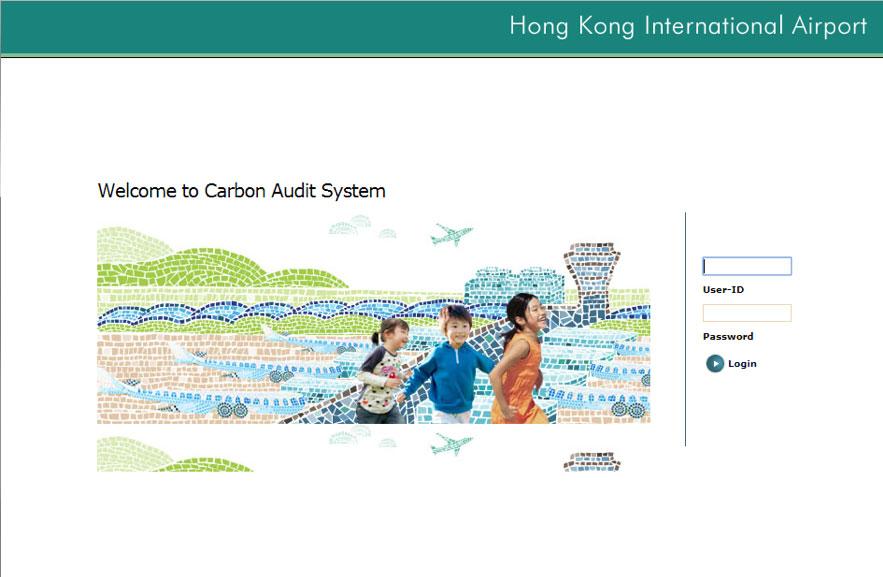
We also support our business partners in meeting our carbon reduction target through four support strategies:
In 2017, a 5.7% reduction in our ‘airport-wide’ carbon intensity was achieved relative to 2015 levels – our baseline for the second carbon reduction pledge. This exceeds both the reduction observed in 2016 and the performance projected in the consultancy study for setting the second reduction target.
HKIA’s ‘airport-wide’ carbon emissions and intensity*
* Covers only the emissions from AAHK and the airport business partners participating in the HKIA Carbon Reduction Programme.
# One participating business partner (which is a small emitter with annual carbon emissions of less than 2,000 tonnes) ceased its operation at HKIA in 2017/18. To enable fair comparison, we have taken out its carbon emissions from our inventory. Therefore, the figures for 2015 and 2016 above are not the same as those disclosed in our Sustainability Report 2016/17.
Electricity consumption
AAHK accounts for approximately 40% of HKIA’s airport-wide carbon emissions. Electricity consumption is the major contributor, accounting for over 90% of AAHK’s carbon emissions. In 2017/18, we recorded a year-on-year decrease of 4.8% and 8.9% in absolute electricity consumption and electricity intensity respectively. The reduction was mainly the result of the replacement of two energy efficient high-voltage chillers in June 2016.
AAHK’s electricity consumption and intensity
Key initiatives
Energy efficiency
- In 2017, we achieved the ISO 50001 Energy Management System (EnMS) Certification for Terminal 1 (T1) and the Midfield Concourse. We will expand the scope of the EnMS to the North Satellite Concourse (NSC) in 2018/19.
- We continue to drive further improvements in energy performance. Example projects include:
- Replacement of LED lights in T1;
- Modification of gantry lighting control in T1;
- Replacement of apron high mast lighting with LEDs;
- Installation of a cloud-based building analytics system for the NSC and the Midfield Concourse;
- Replacement of three energy efficient chillers in Ground Transportation Centre; and
- Replacement of energy efficient pumpsets and motors at Seawater Pump House No.5.
Electrical vehicles
- The first phase of a programme to promote wider use of electric vehicles in the airside areas of HKIA was completed. In cooperation with our business partners, all airside saloon cars were replaced with electrically models in July 2017. The second phase, which will require the replacement of all airside private vehicles with a gross weight of less than 3 tonnes with electric models, is under planning.
- Electric ground services equipment (e-GSE) are being introduced as part of the wider roll-out of HKIA’s GSE Pooling Scheme.
- A trial was conducted involving airside electric passenger buses. We plan to replace all 40 of our airside buses with electric models beginning from 2019.
Preserving biodiversity and functional ecosystems plays an important role in sustaining a high quality of life for the people of Hong Kong. As HKIA and its surrounding waters host species of high ecological value such as the Chinese White Dolphin (CWD) and the Romer’s Tree Frog, we have a duty of care to avoid and minimise adverse impacts on biodiversity during the operation and development of HKIA. As such, we have developed the HKIA Biodiversity Strategy to ensure a structured approach to biodiversity management and to support the introduction of Hong Kong’s first Biodiversity Strategy and Action Plan in 2016.
HKIA Biodiversity Strategy and key actions
Our Strategy serves as a framework for conserving biodiversity at and around HKIA and identifies the key priorities for action, mainly in the following three key focus areas.
- Mitigation and enhancement measures adopted for the Three-runway System (3RS) project. These include:
- Using non-dredged reclamation methods to minimise disturbance to the marine environment;
- Adopting environmentally preferable deep cement mixing for ground improvement works in the disused contaminated mud pit areas north of HKIA;
- Implementing horizontal directional drilling (HDD) technique in the construction of two underwater aviation fuel pipelines to avoid dredging of the seabed;
- Establishing dolphin exclusion zones around potentially noisy marine construction activities;
- Managing SkyPier high-speed ferries (HSFs) by:
- Limiting the total volume of HSF traffic at an annual daily average level of 99 trips prior to designation of the proposed marine park;
- Diverting HSFs travelling to/from Zhuhai and Macao away from the busy and narrowing channel immediately north of HKIA;
- Restricting the speed of those diverted high-speed ferries to 15 knots or below in high CWD abundance areas along the diverted route;
- Designating a marine park of about 2,400 hectares to tie in with the full operation of the 3RS; and
- Setting up a Marine Ecology Enhancement Fund (MEEF) and a Fisheries Enhancement Fund (FEF) with a total budget of HK$400 million. Independent committees were formed to manage these two funds. In 2017/18, the funds approved over HK$8 million in support for 10 projects.
- A research project conducted by the University of Hong Kong entitled “Monitoring of terrestrial non-native insect species in Hong Kong” was completed in July 2017. Supported by the HKIA Environmental Fund, the study monitored the native and exotic communities of ants and moths at HKIA and surrounding habitats.
- Major findings include:
- Discovery of 104 ant species on the airport island and the northern coast of Lantau Island, including two that are new to science, 16 that have never been recorded in Hong Kong and four invasive species;
- Discovery of 157 moth species on the airport island, including one invasive species;
- Discovery of Scenic Hill on the airport island and surrounding forested area acting as a natural barrier to prevent the spread of invasive species at HKIA; and
- Identification of measures to prevent the arrival or dispersal of invasive species in Hong Kong, which is in line with the Government’s Biodiversity Strategy and Action Plan.
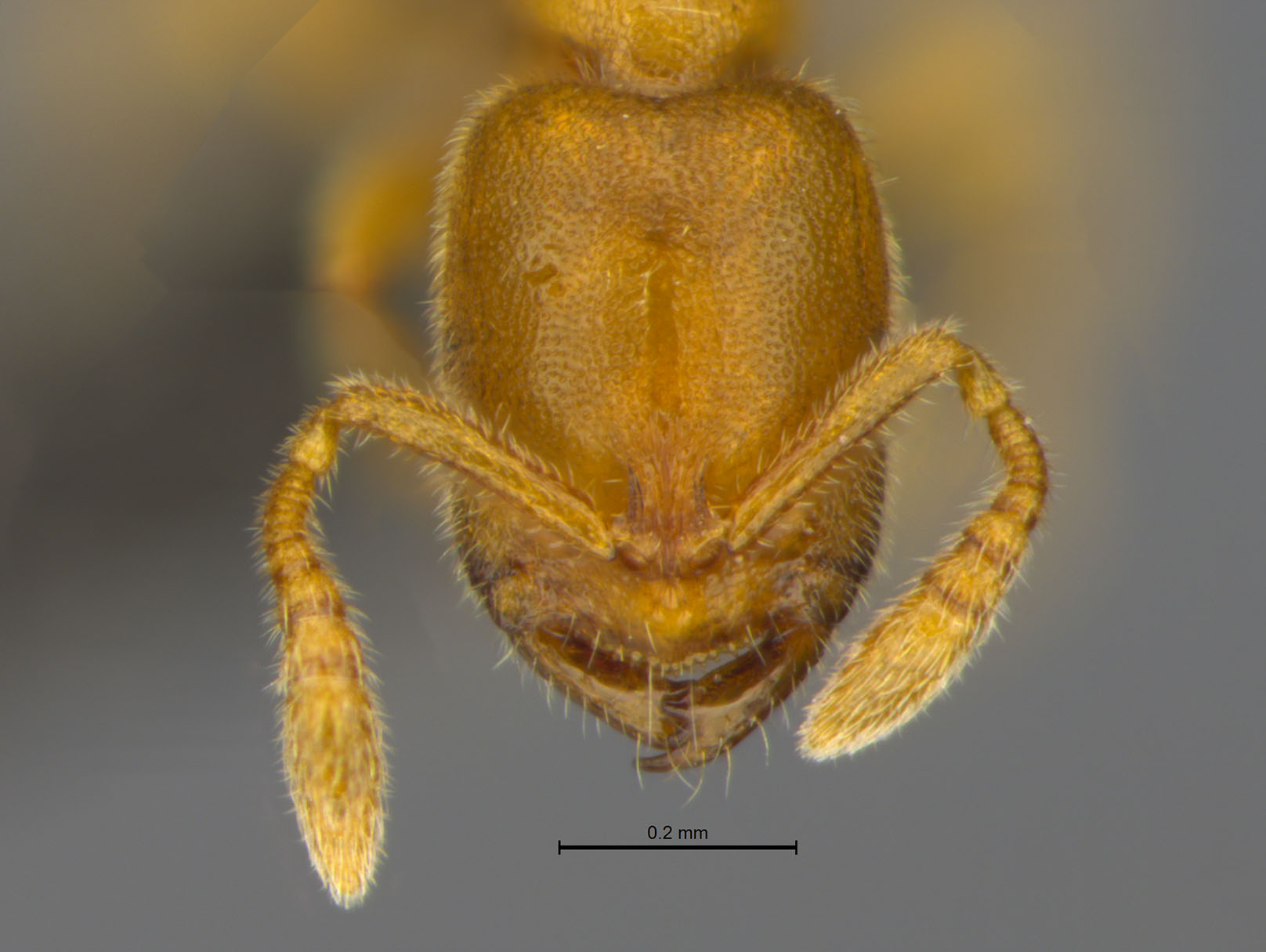
- Supporting a public engagement project initiated by a local NGO, Green Power, to strengthen measures to conserve the Tung Chung River catchment area by monitoring its water quality and other ecological aspects from 2017/18 through the HKIA Environmental Fund.
